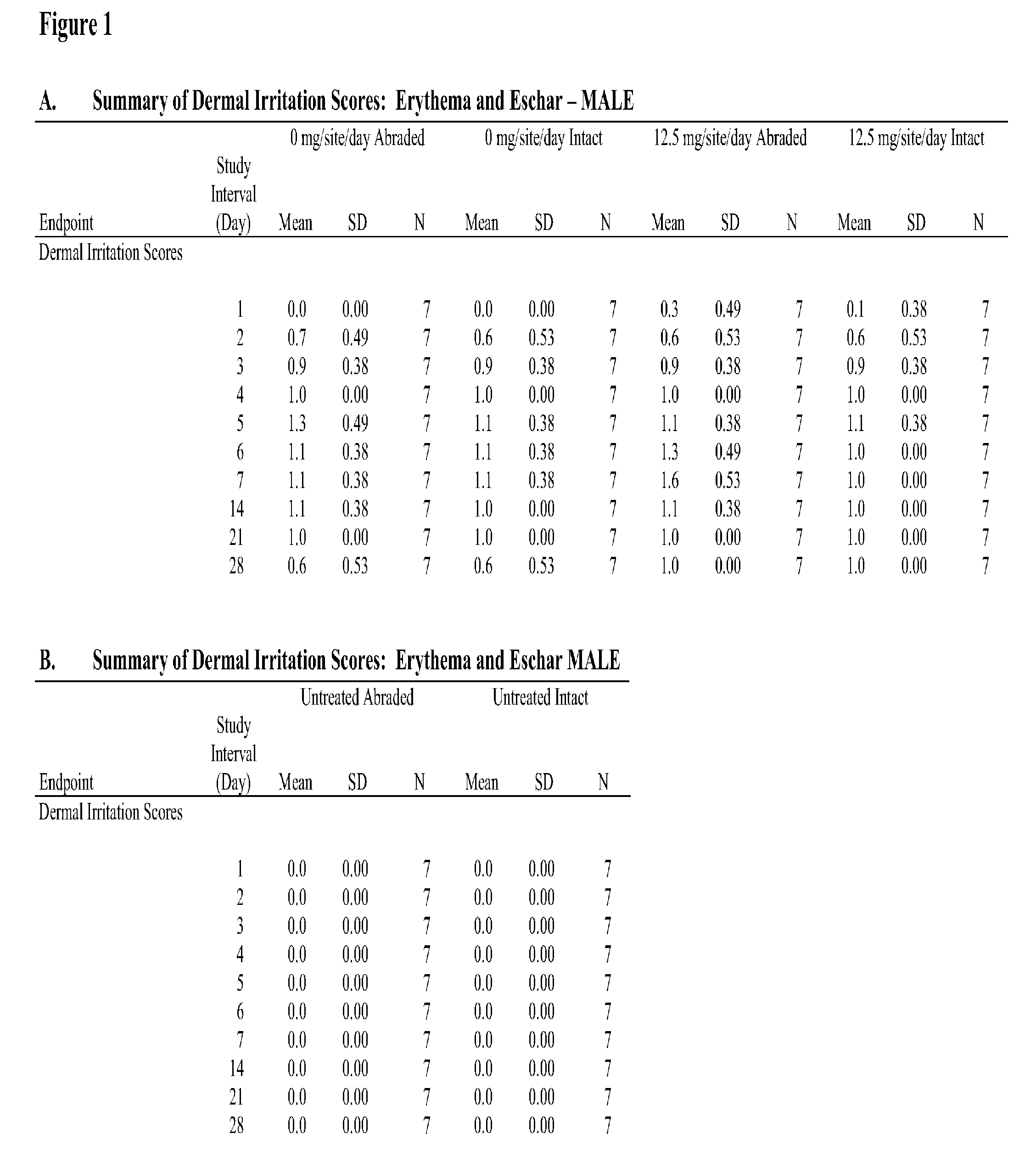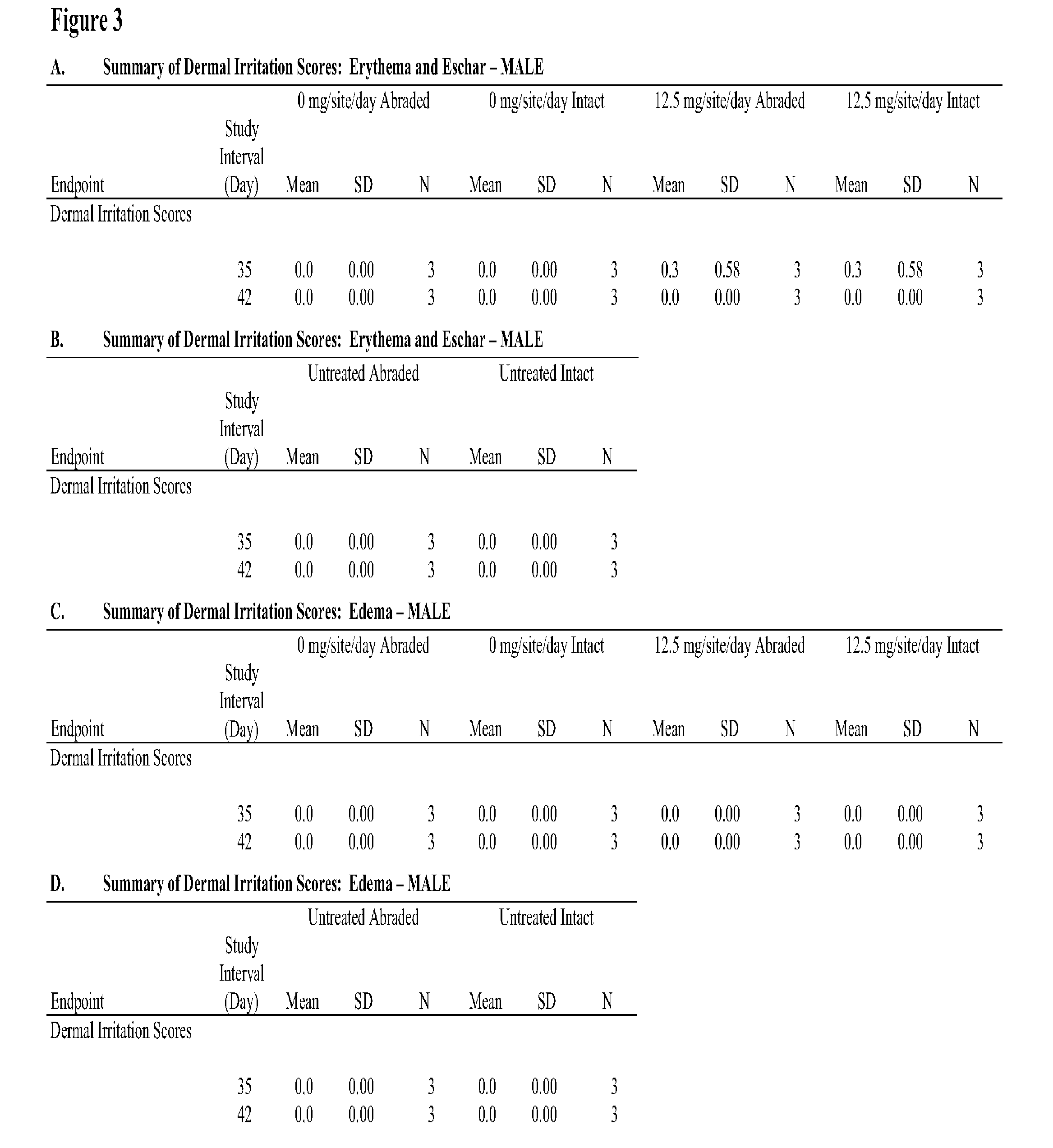Anti-fungal formulation
a technology of formulation and antifungal agent, which is applied in the field of pharmaceutical compositions and formulations, can solve the problems of insufficient formulations for the treatment of onychomycosis, difficult treatment, and crystallization or precipitation of compound, and achieves the effect of reducing the risk of infection, and improving the treatment
- Summary
- Abstract
- Description
- Claims
- Application Information
AI Technical Summary
Benefits of technology
Problems solved by technology
Method used
Image
Examples
example 1
Determination of Solubility of Luliconazole in Different Solvents Suitable for Topical Formulations
[0217]A study was performed to determine the solubility of luliconazole in various solvents that have been listed in the FDA inactive ingredients (IIG) database as approved drug products for topical formulations.
Materials and Methods:
[0218]The solvents selected for the study along with their maximum potencies for use in a topical drug product, as listed in the FDA-IIG database, are given in Table 1B. Luliconazole (lot #08LLCZ28) was used as supplied by Nichino Service Co. (Japan).
TABLE 1BSolvents used in the current study and their maximumpotencies in topical formulations.Maximum potencylisted in FDA IIGdatabase forSolventsSourcestopical formulationAcetone, NFDPT part# 15000012.69% (solution)Ethanol, USP (200 proof)DPT part#160475 91% (solution)Ethyl acetateFisher Scientific, 31% (solution)part# E195-1Propylene carbonate, NFHuntsman, 5% (ointment)#JSPCNFS1Benzyl alcohol, USPDPT par...
example 2
Preparation of Luliconazole Formulations, Including Formulations Containing Greater than 5% wt / wt of Luliconazole
[0236]Various formulations were prepared and assessed as detailed below.
TABLE 5Formulations Showing No Crystallization When Stored in aRefrigerator Over 4 Weeks%%Part #Ingredientswt / wtwt / wt160475Alcohol (200 Proof) USP46.0041.50710400Benzyl alcohol, USP2.004.00160539Propylene Carbonate NF5.005.00150000Acetone NF12.0012.00160216Transcutol ™ P25.0025.00luliconazole10.0012.5Total100100
TABLE 6Luliconazole Nail Solution FormulationsLot 768-0107B01B02B03B04B05B06Part #Ingredient% w / w% w / w% w / w% w / w% w / w% w / w160475Alcohol (200 Proof) USP50.0048.6050.0038.0050.0050.00710400Benzyl Alcohol USP14.002.0014.002.0014.0014.00160539Propylene Carbonate NF5.005.005.00Ethyl Acetate NF28.2027.00153230Isopropyl Alcohol USP10.006.00153250Isopropyl Myristate NF5.00150000Acetone NF6.0010.206.0012.006.00160216Transcutol ™ P20.006.0020.006.0020.0020.00luliconazole5.005.005.005.005.005.00Total100.0...
example 3
Preparation of 5 kg cGMP Batch of 10 Weight Percent Luliconazole Formulation
[0239]Gantrez® ES-435 (0.050 kg) was added to a 10 L stainless steel, round bottom jacketed kettle. The Gantrez® ES-435 container was rinsed with ethanol (200 Proof) USP (1.95 kg) to ensure complete transfer. The solution was mixed using a 1.5 HP air powered dissolver with a 4-inch standard (dissolver) blade. Benzyl alcohol, USP (0.200 kg), propylene carbonate, NF (0.250 kg) and diethylene glycol monoethyl ether, USP / NF (1.25 kg) were added and the solution was mixed until uniform. Acetone, NF (0.63 kg) was added, which included a 5% overage to cover for manufacturing loss. The following preparation was conducted under yellow lighting. Luliconazole (0.5 kg) was added to the solvent mixture and the container was rinsed with alcohol (200 Proof) USP (0.2 kg) to ensure complete transfer. The total alcohol content was 2.15 kg. The luliconazole solution was mixed until all luliconazole solids were visually dissolv...
PUM
| Property | Measurement | Unit |
|---|---|---|
| weight percent | aaaaa | aaaaa |
| weight percent | aaaaa | aaaaa |
| weight percent | aaaaa | aaaaa |
Abstract
Description
Claims
Application Information
 Login to View More
Login to View More - R&D
- Intellectual Property
- Life Sciences
- Materials
- Tech Scout
- Unparalleled Data Quality
- Higher Quality Content
- 60% Fewer Hallucinations
Browse by: Latest US Patents, China's latest patents, Technical Efficacy Thesaurus, Application Domain, Technology Topic, Popular Technical Reports.
© 2025 PatSnap. All rights reserved.Legal|Privacy policy|Modern Slavery Act Transparency Statement|Sitemap|About US| Contact US: help@patsnap.com



